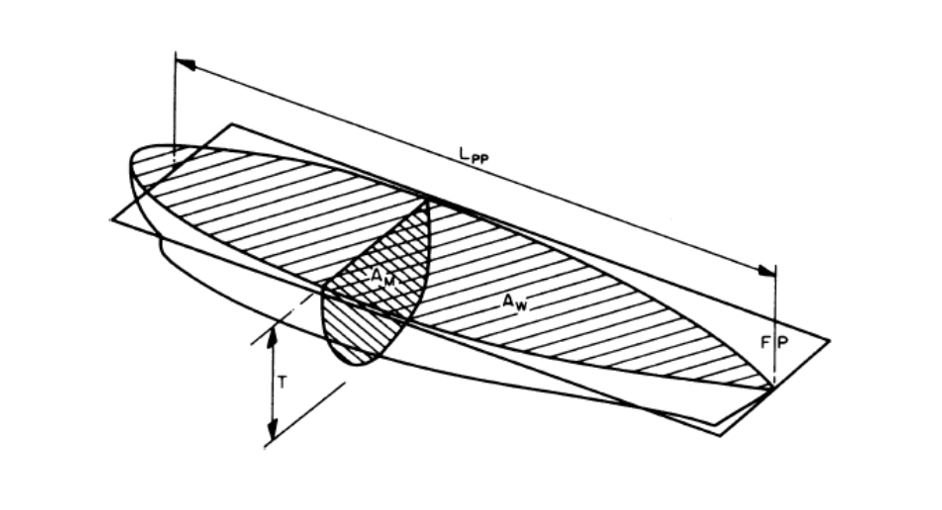Ship Form Coefficients
Dec 6th 2021
3 Min read

Coefficients of form are dimensionless numbers that describe hull fineness and overall shape characteristics.The coefficients are nothing but the ratios of areas or volumes for the actual hull form of the vessel compared to prisms or rectangles governed by the vessel’s length, breadth, and draft. The length and breadth on the waterline as well as draft changes with displacement, coefficients of form also vary accordingly with displacement.Coefficients of form are used to facilitate the area and volume calculations for stability or strength analysis of the vessel.
1. Block coefficient (CB)
It is the ratio of the volume of a ship’s underwater form to the volume of the circumscribing rectangular solid. where:
where:LPP is length between perpendiculars
B is the extreme breadth underwater
T is the mean draught.
2. Waterplane Coefficient (C𝐖𝐏)
It is the ratio of the area of the waterplane to the circumscribing rectangle. where:
where:: AW is waterplane area
LWL is the waterline length
B is the extreme breadth of the waterline.
3. Prismatic coefficient
